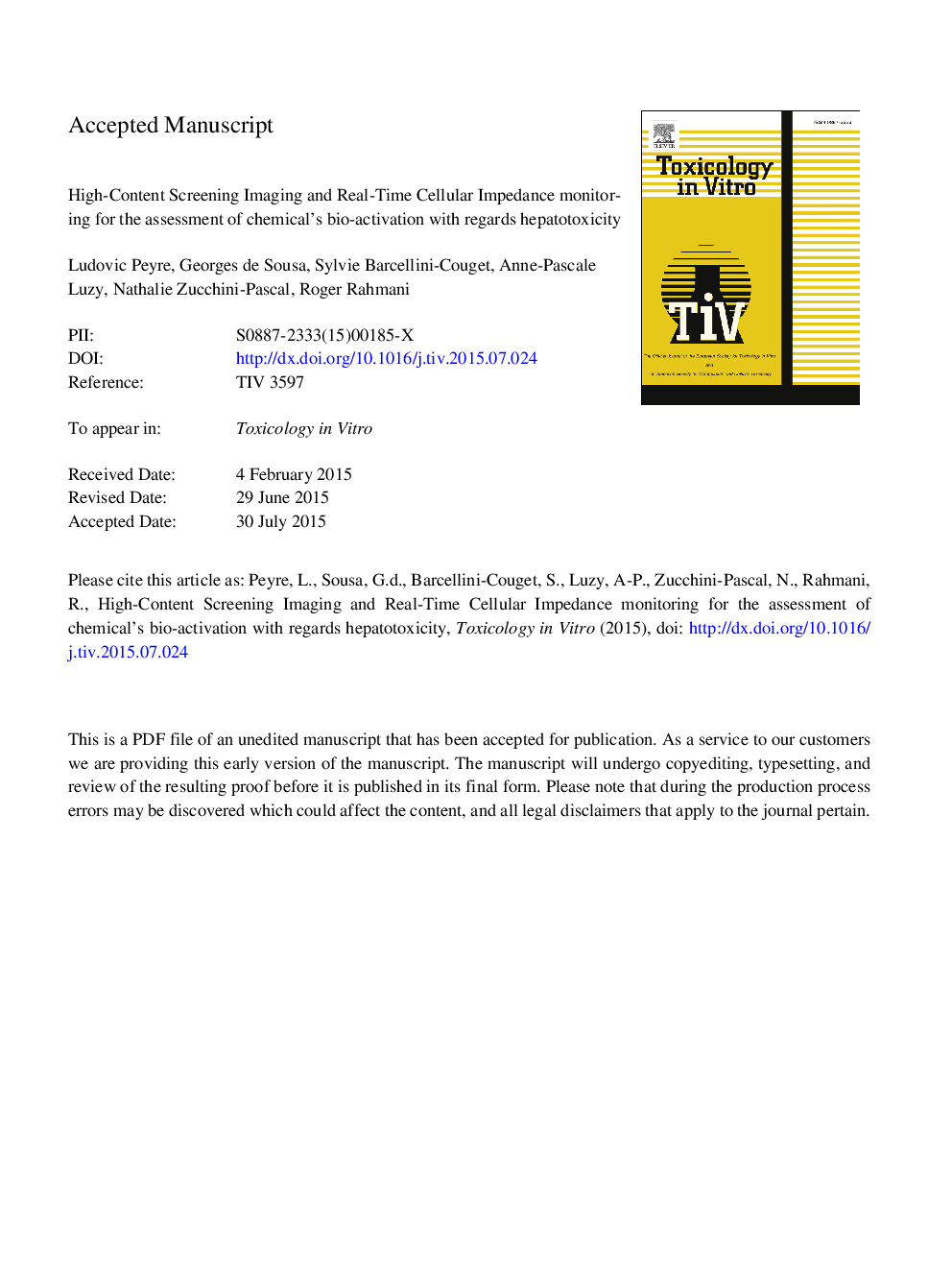| Article ID | Journal | Published Year | Pages | File Type |
|---|---|---|---|---|
| 5861497 | Toxicology in Vitro | 2015 | 57 Pages |
Abstract
Testing hepatotoxicity is a crucial step in the development and toxicological assessment of drugs and chemicals. Bio-activation can lead to the formation of metabolites which may present toxicity for the organism. Classical cytotoxic tests are not always appropriate and are often insufficient, particularly when non metabolically-competent cells are used as the model system, leading to false-positive or false-negative results. We tested over 24Â h the effects of eight reference compounds on two different cell models: primary cultures of rat hepatocytes and FAO hepatoma cells that lack metabolic properties. We performed inter-assay validation between three classical cytotoxicity assays and real-time cell impedance data. We then complemented these experiments with high-content screening (HCS) to determine the cell function disorders responsible for the observed effects. Among the different assays used, the neutral red test seemed to be well suited to our two cell models, coupled with real-time cellular impedance which proved useful in the detection of bio-activation. Indeed, impedance monitoring showed a high sensitivity with interesting curve profiles yet seemed unsuitable for evaluation of viability on primary culture. Finally, HCS in the evaluation of hepatotoxicity is likely to become an essential tool for use in parallel to a classical cytotoxic assay in the assessment of drugs and environmental chemicals.
Keywords
HCsAPAPPBSNCIFBSamodiaquineRTCAGSHIC50oligomycin3-(4,5-dimethylthiazol-2-yl)-2,5-diphenyltetrazolium bromideDMSOMTTNRUAdenosine TriphosphateATPDrug-induced liver injuryErythromycinDESAcetaminophenCSAregistration, evaluation, authorization and restriction of chemicalsneutral red uptakeDiethylstilbestrolDILIDimethyl sulfoxideRetinoic acidREACHfetal bovine serumCyclosporine ACyclophosphamidecell indexInhibitory Concentration 50%Phosphate buffered salinefurosemidehigh-content screeningcarbamazepineGlutathione
Related Topics
Life Sciences
Environmental Science
Health, Toxicology and Mutagenesis
Authors
Ludovic Peyre, Georges de Sousa, Sylvie Barcellini-Couget, Anne-Pascale Luzy, Nathalie Zucchini-Pascal, Roger Rahmani,
